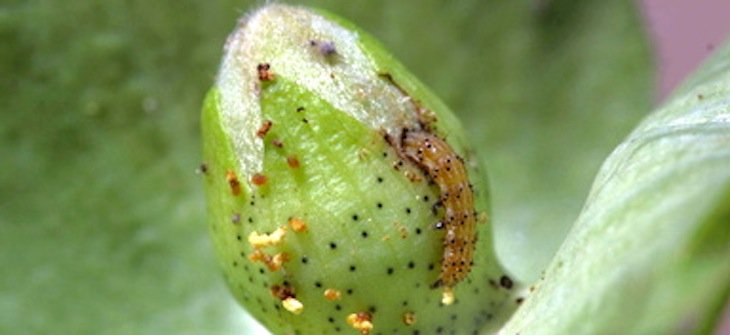Arctic cold snap in January to have little impact on insects
by April 15, 2024 1:18 pm 237 views

Bitterly cold temperatures may reduce the number redbanded stinkbugs this year, but it will have minimal or no impact on other insects, said Ben Thrash, extension entomologist for the University of Arkansas System Division of Agriculture.
Temperatures plunged throughout the state in mid-January with parts of the state getting 6-8 inches of snow. Temperatures dipped below zero and daytime highs remained below freezing for three to four days, according to the National Weather Service. A second strong cold front followed on Jan. 18, with highs remaining around the freezing mark.
“They’re not used to this extremely cold weather, being native to the tropics, so we probably won’t have any redbanded stink bugs this year,” he said. “But every other insect, well, the cold likely didn’t impact them too much. Green stinkbugs, brown stinkbugs and things that are just native to here, aren’t really going to be affected.
“We saw that a few years ago when we had an extremely cold stretch,” Thrash said.
In February 2021, arctic temperatures covered the South, and it appears to have impacted the insect population.
During that year, “our bollworms seemed to be a little delayed, and I’m pretty sure we also had a big Fall Armyworm outbreak too,” Thrash said, adding that insects migrating from milder climes into Arkansas are unlikely to be affected.
Nick Bateman, a fellow extension entomologist, said these pests are tougher than people think.
“Work that’s been done out of Louisiana State University shows that, to kill 90% of the redbanded population, it takes seven hours of direct exposure at 20 degrees,” he said.
Researchers in Arkansas are also looking at “weather data from the past several years to build a prediction model,” Bateman said.
“Everybody is under the impression we had such a cold, bad winter, but really it was about a 10-day stretch,” Bateman said. “Other than that, it’s been pretty mild.”
Redbanded stinkbugs are native to subtropical climates of Central America, and typically migrate north through Texas and Louisiana with the rising temperatures of spring and summer. In 2017, the redbanded stinkbugs triggered concern across the Mid-South, prompted formation of the Ark-La-Miss Emergency Forum on Redbanded Stink Bugs in August of that year.
Redbanded stinkbugs were first reported in the United States in the early 1970s. Its current range is from Argentina to the U.S. South. The United States Department of Agriculture reports that insects cause about $70 billion worth of damage to the world’s food crops each year.
